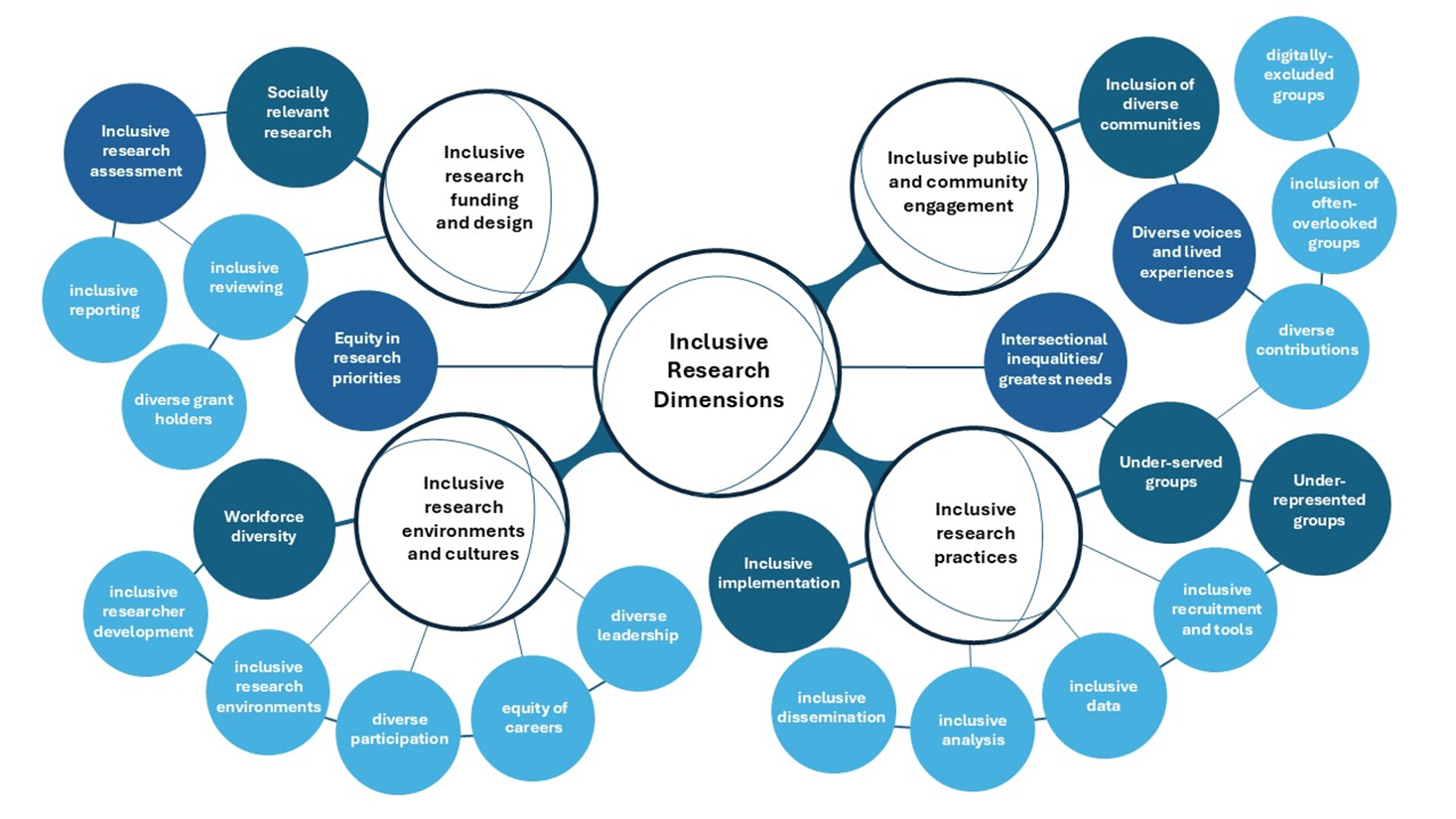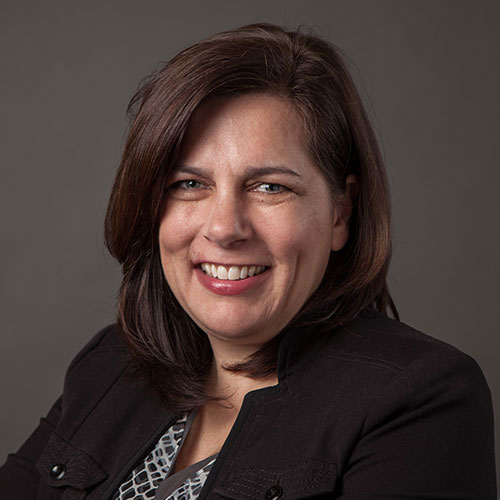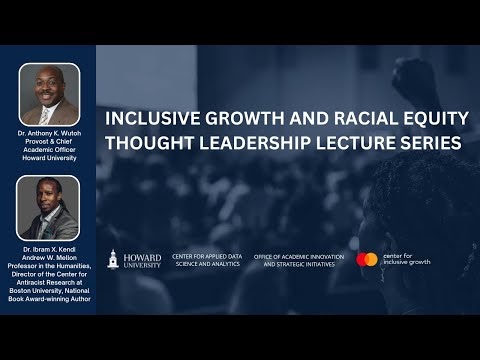In today’s higher education landscape, the idea that future students will need more academic support is far from a catchphrase—it reflects a profound shift in both student needs and faculty responsibilities.
Over the past few decades, the demands on faculty have surged due to an increasing number of accommodation requests and the diverse challenges that students bring from their varied high school experiences and personal lives. Consequently, educators are now expected to deliver a more personalized and differentiated education than ever before.
As the student population becomes increasingly diverse and faces new external pressures, traditional support models are proving inadequate. We must move beyond reactive accommodations and embrace a comprehensive, tailored and proactive system of academic support. This transformation is essential for empowering both students and educators to thrive in an increasingly complex academic environment.
Expanding Accommodation Needs
One of the most noticeable changes in today’s academy is the sharp increase in the number of students requiring accommodations. As many as a quarter of my students have a registered disability, and the accommodations that I am required to provide have changed in significant ways post-pandemic.
Previously, universal design principles were seen as adequate to ensure accessibility for all. Courses were retrofitted with extended deadlines, recorded lectures and online resources, providing a common platform without isolating individual needs.
However, today’s reality demands a more nuanced and tailored approach. Accommodations now often involve significant modifications—such as flexible attendance policies, alternative assessment formats and even exemptions from standard class participation—that alter the very nature of the educational experience.
These changes necessitate careful planning and ongoing communication between faculty, students and disability services to create a learning environment where every student can succeed. It also requires more training, resources and support for faculty and students—which hasn’t taken place.
The Legacy of Uneven Educational Backgrounds
Another key challenge arises from the uneven educational experiences that many students received in high school. Over the past several decades, the disparity in academic preparation has widened significantly. As a result, students now enter college with a much broader range of skills, background knowledge and even vocabulary than in previous generations.
For some, high school provided a strong foundation, equipping them with the critical thinking skills and subject mastery necessary for the rigors of higher education. These students are well prepared to dive into complex course material and participate actively in academic discussions.
In contrast, others come from educational environments where resources were limited or where the curriculum was less challenging. These students frequently struggle to meet the high standards expected at the collegiate level, finding themselves overwhelmed by the pace and depth of instruction.
This variation in preparation places an additional burden on faculty, who must continuously adapt their teaching strategies to meet the needs of an unevenly prepared student body. In many classes, instructors face the daunting task of simultaneously engaging students who excel academically while also providing targeted support for those who are less prepared.
This often means developing multiple instructional approaches, creating supplementary materials and offering additional feedback and tutoring sessions. Faculty must work diligently to ensure that every student has the opportunity to succeed, balancing the needs of advanced learners with those who require more foundational support.
The challenge of uneven educational backgrounds underscores the critical need for a more flexible and individualized approach to teaching. Institutions must recognize this disparity and invest in innovative teaching methods, robust academic support services and ongoing faculty development. Only through such concerted efforts can educators ensure that all students, regardless of their starting point, are given the tools they need to thrive in college and beyond.
Increasing Demands on Students’ Time
Today’s students confront unprecedented pressures on their time. The demands of balancing work, extracurricular activities and family responsibilities have become an everyday reality, leaving many with significantly less time to devote to their studies. This predicament is not merely an inconvenience—it directly affects students’ academic performance and well-being.
One of the most critical challenges is that these competing demands can hinder students’ ability to engage fully with challenging course material. I expect my students to tackle lengthy, demanding texts that demand deep concentration and sustained effort. When students are pressed for time, they often resort to skimming or incomplete reading, which can lead to gaps in understanding and ultimately a shortfall in academic achievement.
This phenomenon not only compromises the quality of their learning but also contributes to a broader pattern of stress and burnout. The cumulative effects of these pressures can have long-lasting impacts on both academic performance and overall mental health.
Given these realities, it is incumbent upon faculty to recognize the multiple challenges faced by today’s students. Traditional teaching methods and rigid assessment schedules may no longer be effective or equitable. Instead, educators must explore flexible teaching methods and alternative assessment strategies that allow students to manage their time more effectively.
For example, integrating online discussion or tutoring sessions, offering modular coursework and incorporating a mix of formative assessments can provide students with the flexibility they need to engage with the material at their own pace. Such approaches not only accommodate the varied schedules of modern students but also help maintain academic integrity by ensuring that learning outcomes are met without forcing students to sacrifice quality for convenience.
Adapting teaching strategies to reflect the realities of modern student life is not just a matter of convenience—it is a necessity for fostering academic success and reducing stress. By creating more flexible, responsive learning environments, faculty can help students overcome the challenges of time management and ensure that they have the resources needed to thrive both academically and personally.
This rethinking of academic support is essential in an environment where the well-being of students must remain at the heart of the educational experience.
Cultural and Socioeconomic Diversity
Higher education’s student body is more diverse than ever, encompassing a wide range of cultural, linguistic and socioeconomic backgrounds. This diversity enriches the academic environment, infusing classrooms with a wealth of perspectives and experiences. However, it also brings significant challenges, particularly when it comes to addressing varied perspectives on identity, language and values.
In today’s classrooms, educators are tasked not only with delivering academic content but also with navigating a complex array of social sensitivities and assertive demands for cultural responsiveness.
One emerging trend is that many students have become increasingly sensitive about their peers’ feelings. They are cautious about expressing opinions that might inadvertently harm or offend, reflecting a heightened awareness of diversity and the impact of language on identity. They worry about appearing stupid or out of touch. This sensitivity, while rooted in a genuine desire for inclusivity, can lead to self-censorship in discussions and a reluctance to engage in the robust debates that have long been a hallmark of academic inquiry.
In contrast, another segment of the student population is more assertive and less deferential than in the past. These students actively demand that the curriculum reflects their interests and addresses the realities of their lives. They expect academic content to be culturally responsive—incorporating diverse voices and challenging traditional perspectives. This shift in attitude is not merely about political correctness; it is about ensuring that the educational experience is relevant and reflective of the complex, diverse, globalized world in which they live.
To meet these evolving needs, courses must be designed with a keen awareness of these differences. Faculty must create learning environments that are both safe and intellectually challenging, where discussions are inclusive yet rigorous and where students feel empowered to express themselves without fear of causing unintended harm.
This requires a deliberate shift in curriculum design and pedagogical approaches. Educators must become facilitators of cultural dialogue, employing strategies such as structured debates, reflective exercises and collaborative projects that allow students to explore multiple perspectives. In doing so, instructors not only address academic objectives but also help students develop the critical communication skills needed to advocate for themselves and engage in meaningful discourse.
Moreover, institutions must invest in professional development for faculty, ensuring that they are well equipped to navigate these complexities. Workshops on culturally responsive teaching and conflict resolution can provide valuable tools for managing sensitive discussions and balancing diverse viewpoints. By integrating these practices into everyday teaching, universities can foster a dynamic academic community that respects individual differences while promoting shared learning.
The challenges posed by a more sensitive yet assertive student body underscore the need for a broader rethinking of the educational experience. True academic support must be proactive and individualized—transcending one-size-fits-all accommodations to embrace a model that is responsive to the unique needs and cultural contexts of each student. This holistic approach not only enhances academic performance but also enriches the overall learning environment, creating a space where every student can thrive.
Rethinking Course Design
In the past, courses were often structured around a standardized curriculum intended to serve a homogeneous student body. Universal design for learning provided a foundation for making courses accessible, yet it was designed as a one-size-fits-all solution. Today, however, students enter higher education with vastly different backgrounds, learning styles and personal challenges. These differences demand a more nuanced approach. Faculty must now consider how to build courses that not only accommodate diverse needs but actively build on each student’s unique strengths.
This involves reimagining traditional assignments and assessments to allow for multiple avenues of expression—whether through essays, presentations, projects or creative multimedia formats—ensuring that mastery of the subject matter is measured in ways that align with individual capabilities.
Faculty as Facilitators of Inclusive Learning
To implement these changes effectively, educators must transition from being mere transmitters of information to becoming facilitators of a dynamic, inclusive learning environment. This shift requires faculty to develop new skills and adopt innovative teaching strategies that go beyond conventional lectures.
For instance, incorporating collaborative learning methods, peer mentoring and structured feedback sessions can help create a classroom culture where students feel empowered to engage with the material and with one another. Such methods not only support individual learning journeys but also foster a sense of community and shared responsibility for academic success.
Beyond Reactive Disability Accommodations
One of the most glaring weaknesses in current disability policies at many colleges, including mine, is their failure to equip students with the practical skills and resources necessary for long-term academic success.
While accommodations—such as extended deadlines, modified attendance requirements or alternative assessment methods—are undoubtedly important, they often function as a one-way street. Disability centers, overwhelmed by demand and constrained by limited resources, focus primarily on implementing reactive measures rather than providing proactive, skill-building support.
This approach leaves many students without the essential tools they need to navigate the rigors of higher education independently. For instance, while accommodations may allow a student to attend class remotely or receive extra time on exams, they rarely come with training in self-advocacy. Students who struggle to articulate their needs or negotiate further modifications remain at a disadvantage, potentially compromising their academic performance.
Similarly, critical skills such as effective study techniques, note taking and time management are often overlooked. Without guidance in these areas, students may continue to face obstacles that hinder their ability to fully engage with course material and meet academic expectations.
The result is a support system that, while well intentioned, treats accommodations as the end point rather than the beginning of a broader educational strategy. True academic support should empower students to develop self-reliance and resilience, ensuring that they are not merely recipients of modified policies but active participants in their own learning journeys.
This requires a fundamental shift from a model that simply reacts to student needs toward one that proactively builds the skills necessary for lifelong success.
In order to address this critical shortfall, institutions must invest in comprehensive support programs that extend beyond traditional accommodations. Workshops on self-advocacy, time management and effective study habits should be integrated into the academic framework.
Moreover, disability centers need to establish stronger partnerships with academic departments to create a seamless support network that bridges the gap between accommodations and skill development. Only by adopting a holistic approach can colleges ensure that students with disabilities are not just surviving within the academic system, but truly thriving.
The Need for Ongoing Professional Development
One of the biggest challenges is that most faculty members were neither expected to learn nor trained in these inclusive teaching practices. The rapidly evolving educational landscape demands continuous professional development. Institutions must invest in workshops, seminars and training programs that equip faculty with the latest strategies in inclusive pedagogy and collaborative teaching.
By learning to use new digital tools and adapting to flexible teaching methods, educators can better address the wide range of learner needs. Ongoing training is crucial for fostering an environment where faculty feel supported and empowered to experiment with innovative teaching practices without compromising academic rigor.
Faculty members face mounting pressure to adapt to new teaching methodologies, technological advancements and evolving accommodation practices. While universities routinely mandate training on issues like conflicts of interest, Title VI and IX compliance and technology risks, support in the core areas of pedagogy and assessment remains minimal. To address this gap, institutions must invest in comprehensive, ongoing in-service training for faculty. This training should cover inclusive teaching practices, innovative assessment strategies and the effective integration of digital tools into the classroom.
Moreover, faculty should have continuous access to expert guidance and peer support. Dedicated centers for teaching excellence or mentoring programs need to offer real-time assistance, enabling instructors to navigate challenges as they arise. By fostering a culture of professional development and collaboration, universities can empower educators to experiment with new approaches and refine their methods over time—ensuring that teaching remains both rigorous and responsive to the diverse needs of modern students.
A Call for a Comprehensive Reimagining
The current model of academic support—with its patchwork of reactive accommodations and sporadic training sessions—is no longer sufficient to address the evolving challenges facing both faculty and students. The demands of modern higher education have shifted dramatically, requiring more than temporary fixes; they demand a radical reimagining of the educational experience that is individualized, personalized and differentiated to meet the unique needs of every member of the academic community.
At the heart of this transformation lies a fundamental shift in institutional priorities. Universities must reallocate resources toward continuous professional development for educators and establish robust support systems for students. This means creating structured, ongoing training programs that equip faculty with the latest inclusive teaching strategies and digital tools, enabling them to adapt their methods to the diverse learning styles and backgrounds of today’s students.
Such an investment not only enhances academic performance but also cultivates the critical skills and self-advocacy that are essential for lifelong success.
Moreover, we must move beyond the reactive, one-size-fits-all accommodations that have characterized the past. Instead, academic support should be integrated into every aspect of teaching and learning, forming the backbone of a dynamic and responsive educational ecosystem.
For example, early intervention strategies, such as formative assessments and iterative feedback, ensure that learning gaps are addressed before they widen and personalized learning plans can be developed to build on each student’s unique strengths.
The benefits of such a comprehensive approach are twofold. First, it supports academic success by creating an inclusive learning environment that is adaptable to the individual needs of each student. Second, it alleviates the burden on faculty, who currently face the daunting task of juggling research, administrative duties and the increasing diversity of student needs.
By establishing a framework of proactive support, institutions can empower both educators and learners to thrive in a challenging, rapidly shifting academic landscape.
As higher education continues to evolve, so too must our strategies for academic support. The traditional model of reactive accommodations and ad hoc training is no longer adequate in the face of growing student diversity, uneven preparation and heightened external pressures on students’ time.
Only by embracing a comprehensive, proactive and flexible approach can we ensure that every student—and every educator—is equipped to navigate the complexities of modern academic life.
This reimagined support system will not only boost academic performance but also enrich the overall educational experience, fostering a vibrant, inclusive and resilient community that is prepared to meet the challenges of the future.
In an era of tightening institutional finances and overburdened faculty, the shift toward a more individualized approach to education may seem like an overwhelming challenge. However, this shift is not optional—it is both a legal requirement and an essential strategy for improving student retention, graduation rates and postgraduation outcomes.
As student populations become increasingly diverse and face complex external pressures, campuses must prioritize academic and faculty support to create a learning environment where every student can thrive.
The Legal Mandate for Individualized Support
Legislation such as the Americans with Disabilities Act and Section 504 of the Rehabilitation Act mandate that institutions provide equal access to education for all students. These legal frameworks require not only reactive accommodations but also proactive, individualized support that anticipates and addresses the diverse needs of the student body.
In practice, this means that colleges and universities must design courses, develop teaching methods and implement support systems that are flexible and tailored to individual learning styles. Ignoring this mandate not only risks legal repercussions but also undermines the institution’s commitment to inclusivity and equal opportunity.
Enhancing Academic Success and Student Outcomes
In addition, the current challenges faced by students—ranging from increased accommodation needs and uneven educational backgrounds to intense time pressures and cultural diversity—demand more than a one-size-fits-all solution.
When students receive personalized academic support, retention and graduation rates improve significantly. Tailored support enables students to engage deeply with course material, develop critical skills and ultimately achieve better postgraduation outcomes. By creating a comprehensive support system, institutions can help bridge the gap between diverse student needs and the rigorous demands of higher education, ensuring that every student has the opportunity to succeed.
The Burden on Faculty and the Need to Rethink Institutional Priorities
For faculty, the shift to an individualized educational model requires a significant rethinking of traditional teaching methods.
Instructors must balance the needs of advanced learners with those requiring additional support, all while managing other academic responsibilities such as research and grant writing. This challenge is compounded by the lack of sufficient training and resources currently available to help educators implement inclusive teaching practices. Institutions must respond by reallocating resources and prioritizing continuous professional development.
Only by providing faculty with the necessary tools and support can universities foster a dynamic, responsive learning environment that benefits both teachers and students.
The move toward a more individualized, personalized and differentiated approach to education is no longer a luxury—it is a legal and institutional imperative. As student needs evolve in a rapidly changing world, institutions must reframe academic support as a core element of the educational experience.
By prioritizing continuous faculty training, investing in robust support systems and rethinking course design, colleges and universities can enhance academic performance, improve student retention and graduation rates and ensure better outcomes after graduation.
There is no way around this transformation: If we are to equip every student and educator to thrive in an increasingly complex academic environment, the shift to a comprehensive, proactive and flexible support model must become the cornerstone of higher education.










